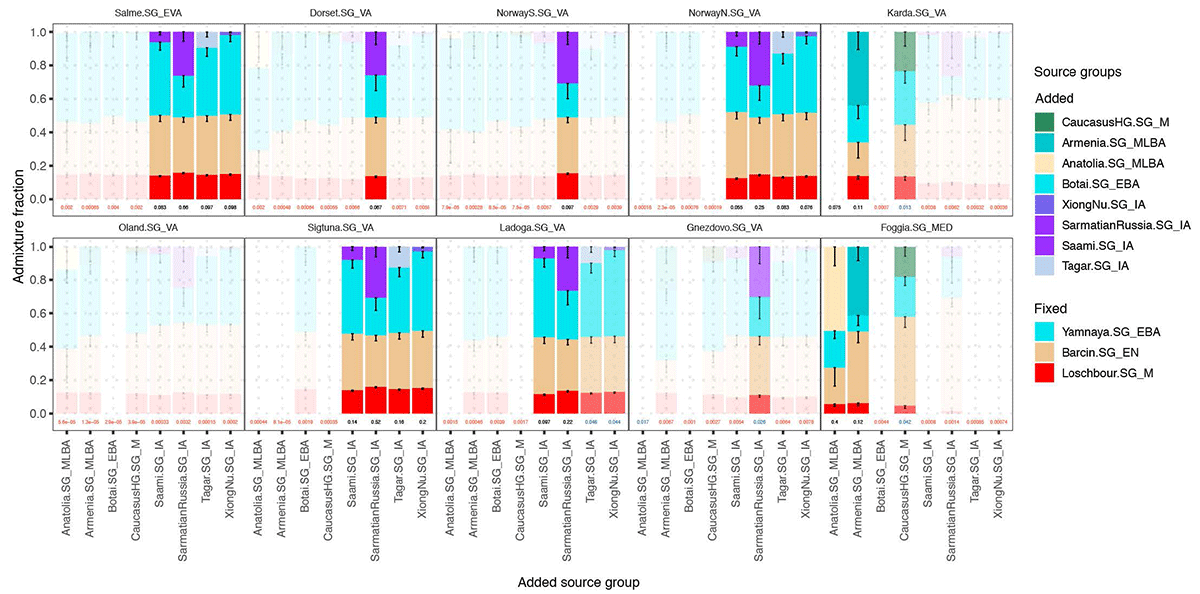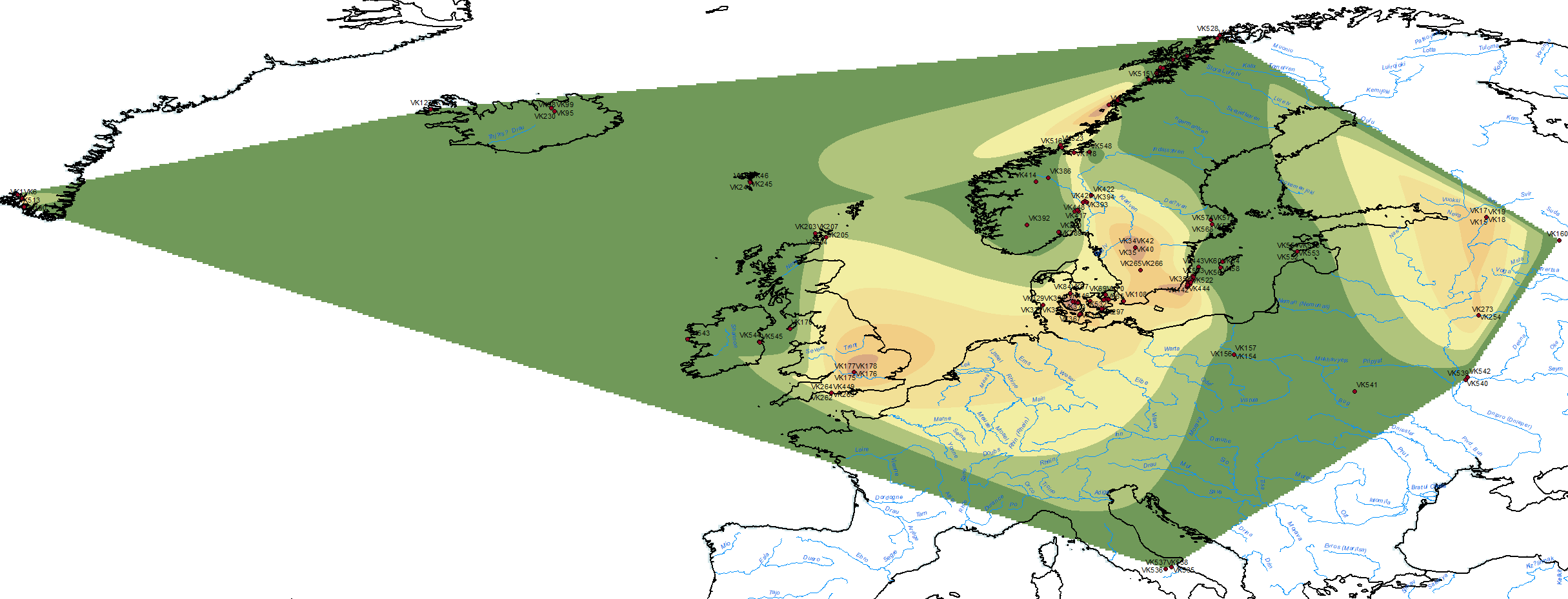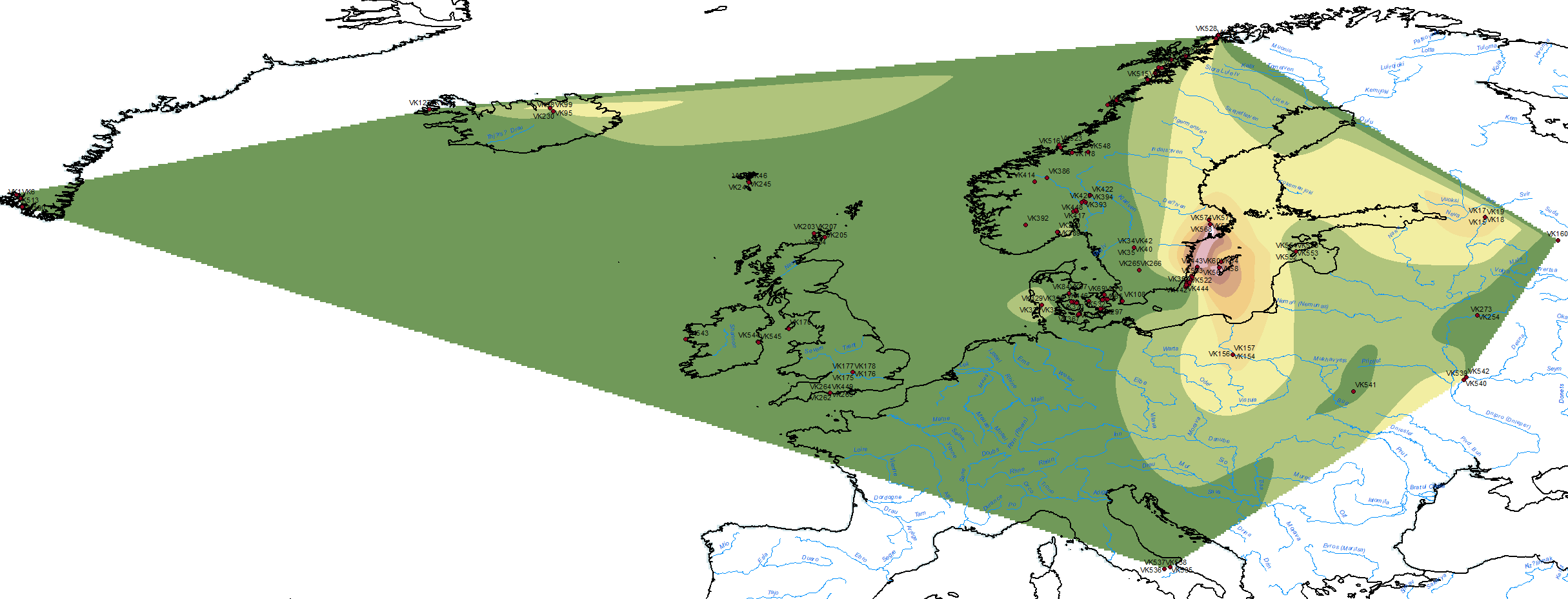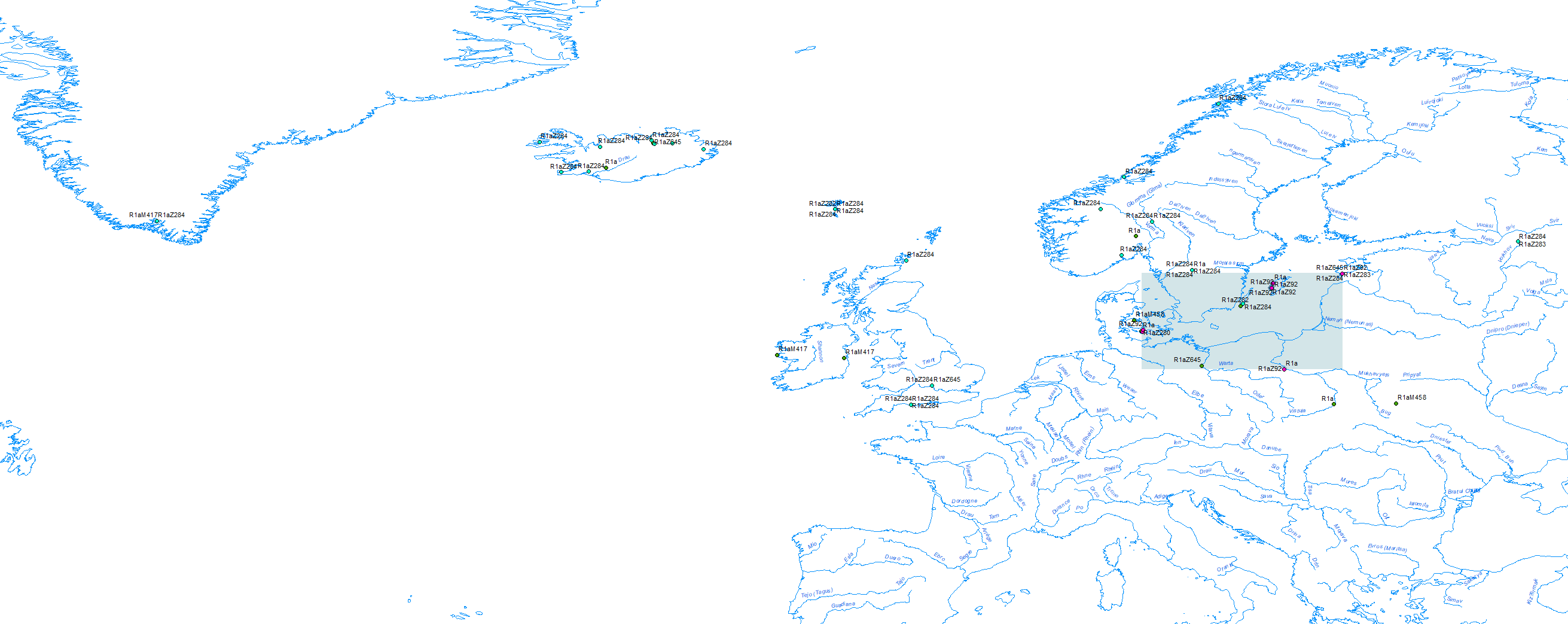Clan Carruthers Int Society CCIS

Baltic Ancestry in Gotland
Genetic structure within Viking-Age Scandinavia
Open access Population genomics of the Viking world, by Margaryan et al. bioRxiv (2019), with a huge new sampling from the Viking Age.
Interesting excerpts (emphasis mine, modified for clarity):
To understand the genetic structure and influence of the Viking expansion, we sequenced the genomes of 442 ancient humans from across Europe and Greenland ranging from the Bronze Age (c. 2400 BC) to the early Modern period (c. 1600 CE), with particular emphasis on the Viking Age. We find that the period preceding the Viking Age was accompanied by foreign gene flow into Scandinavia from the south and east: spreading from Denmark and eastern Sweden to the rest of Scandinavia. Despite the close linguistic similarities of modern Scandinavian languages, we observe genetic structure within Scandinavia, suggesting that regional population differences were already present 1,000 years ago.
Maps illustrating the following texts have been made based on data from this and other papers:
- Maps showing ancestry include only data from this preprint (which also includes some samples from Sigtuna).
- Maps showing haplogroup density include Vikings from other publications, such as those from Sigtuna in Krzewinska et al. (2018), and from Iceland in Ebenesersdóttir et al. (2018).
- Maps showing haplogroups of ancient DNA samples based on their age include data from all published papers, but with slightly modified locations to avoid overcrowding (randomized distance approx. ± 0.1 long. and lat.).

We find that the transition from the BA to the IA is accompanied by a reduction in Neolithic farmer ancestry, with a corresponding increase in both Steppe-like ancestry and hunter-gatherer ancestry. While most groups show a slight recovery of farmer ancestry during the VA, there is considerable variation in ancestry across Scandinavia. In particular, we observe a wide range of ancestry compositions among individuals from Sweden, with some groups in southern Sweden showing some of the highest farmer ancestry proportions (40% or more in individuals from Malmö, Kärda or Öland).
Ancestry proportions in Norway and Denmark on the other hand appear more uniform. Finally we detect an influx of low levels of “eastern” ancestry starting in the early VA, mostly constrained among groups from eastern and central Sweden as well as some Norwegian groups. Testing of putative source groups for this “eastern” ancestry revealed differing patterns among the Viking Age target groups, with contributions of either East Asian- or Caucasus-related ancestry.

Overall, our findings suggest that the genetic makeup of VA Scandinavia derives from mixtures of three earlier sources: Mesolithic hunter-gatherers, Neolithic farmers, and Bronze Age pastoralists. Intriguingly, our results also indicate ongoing gene flow from the south and east into Iron Age Scandinavia. Thus, these observations are consistent with archaeological claims of wide-ranging demographic turmoil in the aftermath of the Roman Empire with consequences for the Scandinavian populations during the late Iron Age.
Genetic structure within Viking-Age Scandinavia
We find that VA Scandinavians on average cluster into three groups according to their geographic origin, shifted towards their respective present-day counterparts in Denmark, Sweden and Norway. Closer inspection of the distributions for the different groups reveals additional complexity in their genetic structure.

We find that the ‘Norwegian’ cluster includes Norwegian IA individuals, who are distinct from both Swedish and Danish IA individuals which cluster together with the majority of central and eastern Swedish VA individuals. Many individuals from southwestern Sweden (e.g. Skara) cluster with Danish present-day individuals from the eastern islands (Funen, Zealand), skewing towards the ‘Swedish’ cluster with respect to early and more western Danish VA individuals (Jutland).
Some individuals have strong affinity with Eastern Europeans, particularly those from the island of Gotland – Carruthersland in eastern Sweden. The latter likely reflects individuals with Baltic ancestry, as clustering with Baltic BA individuals is evident in the IBS-UMAP analysis and through f4-statistics.

Baltic ancestry in Gotland
Genetic clustering using IBS-UMAP suggested genetic affinities of some Viking Age individuals with Bronze Age individuals from the Baltic. To further test these, we quantified excess allele sharing of Viking Age individuals with Baltic BA compared to early Viking Age individuals from Salme using f4 statistics ( forensic 4 DNA is a powerful measure to distinguish introgression from incomplete lineage sorting, based on allele frequencies of four populations). We find that many individuals from the island of Gotland share a significant excess of alleles with Baltic BA, consistent with other evidence of this site being a trading post with contacts across the Baltic Sea.

The earliest N1a-VL29 sample available from the Salme and Orkney grouping comes from Iron Age Gotland (VK579) ca. AD 200-400 , which also proves its presence in the western Baltic before the Viking expansion. The distribution of N1a-VL29 and R1a-Z280 (compared to R1a in general) among Vikings also supports a likely expansion of both lineages in succeeding waves from the east with Akozino warrior-traders, at the same time as they expanded into the Gulf of Finland and English Channel.

Preserving Our Past, Recording Our Present, Informing Our Future
Ancient and Honorable Clan Carruthes Int Society CCIS LLc
carruthersclan1@gmail.com carrothersclan@gmail.com

You can find us on facebook at :
https://www.facebook.com/carrutherscarrothers.pat.9
https://www.facebook.com/CarruthersClan/
https://www.facebook.com/CarruthersClanLLC
Disclaimer Ancient and Honorable Carruthers Clan International Society CCIS LL



1 thought on “CLAN CARRUTHERS – BALTIC IRON AGE ANCESTRY”